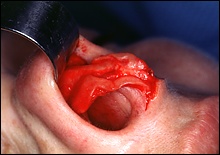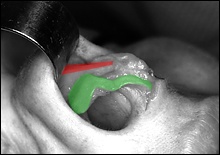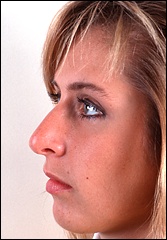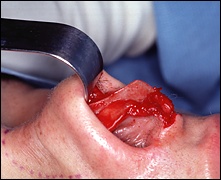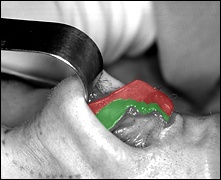 This is another nose
with a total absence of tip support. The most projecting cartilaginous
structure that we see is the cartilage of the nasal septum (red in the diagram). The
green lower lateral cartilage is weak and malpositioned. the skin will not
drape over that tip cartilage if we quit the operation now; rather, it will only
hang on the sharp end of the septum.
This is another nose
with a total absence of tip support. The most projecting cartilaginous
structure that we see is the cartilage of the nasal septum (red in the diagram). The
green lower lateral cartilage is weak and malpositioned. the skin will not
drape over that tip cartilage if we quit the operation now; rather, it will only
hang on the sharp end of the septum.
The nasal septum
is not the tip, so it doesn't count for tip support, it doesn't provide tip projection, and it doesn't
create a tip defining point. The
septum only sets the line of the dorsal profile. It is up to the lower
lateral cartilages, the tip cartilages, to provide tip support for the nose.
|













